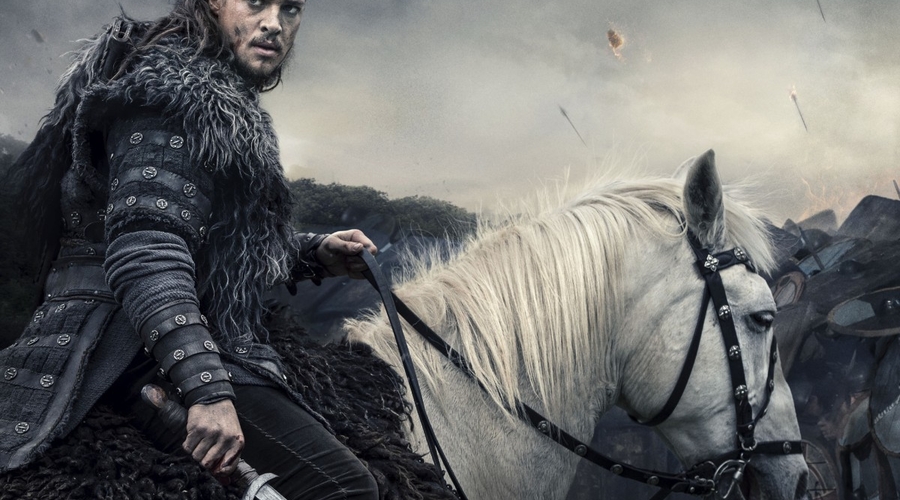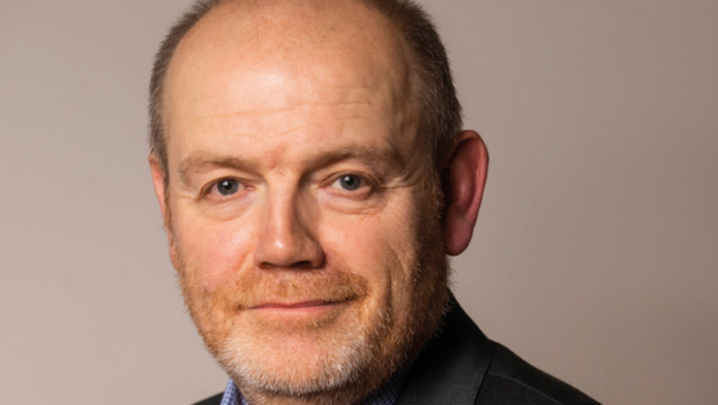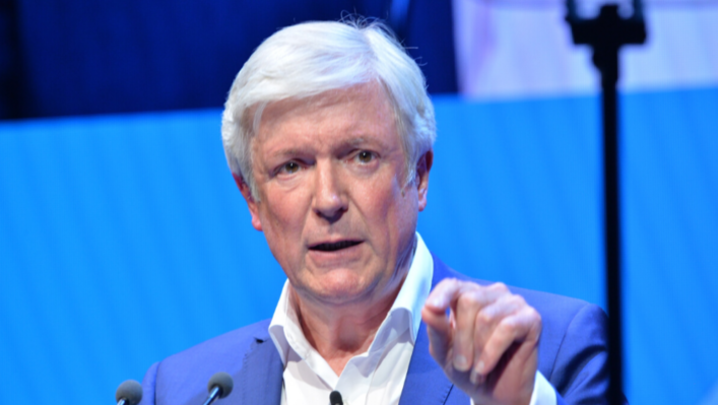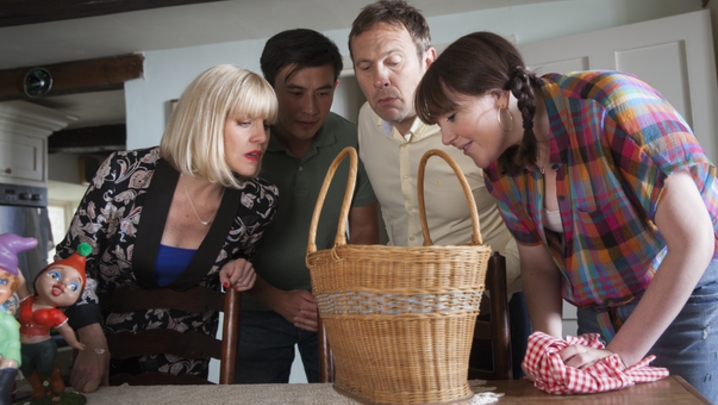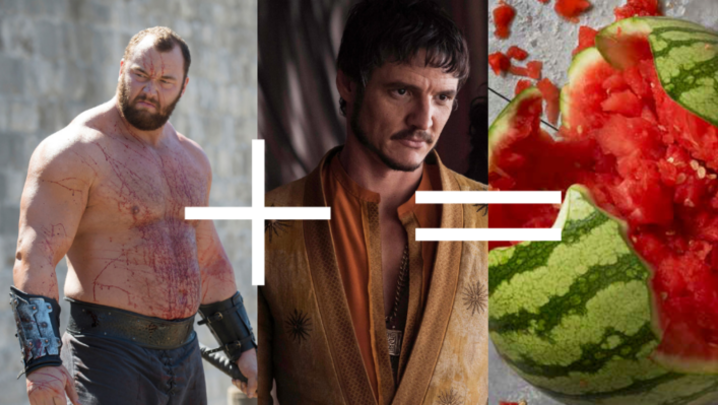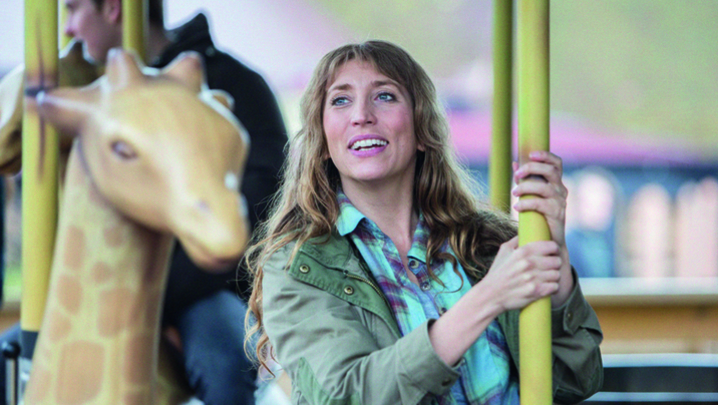Mark Lawson asks why the schedules are full of dramas inspired by all things ‘medieval’
It is said that costume suppliers can spot the next television trend by the sudden emptying of certain bins and racks. A run on tuxes and flapper dresses heralds more 1920s dramas in the schedules; a rush order for spats, monocles and driving goggles means that another PG Wodehouse dramatisation is on the way.
By this measure, chain mail, hessian tunics, saddles, sandals and swords should be almost impossible to hire at the moment. Although Game of Thrones (HBO, since 2011) ends next year, commissioners continue to turn the clock back to a time before clocks.
Troy: Fall of a City, an eight-part BBC-Netflix recreation of the famous 13th century BCE siege, is close to transmission, and a third season of The Last Kingdom (BBC-Netflix), adapted from Bernard Cornwell’s novels set in the ninth century, is expected next year.
Historians’ definition of the Middle Ages is contested, but stretches from as early as the sixth century to as late as the 16th. Although the civilisation depicted in Game of Thrones is fantastical, George RR Martin’s acknowledgement of the influence of the Wars of the Roses places it in the later part of that range. There, among TV fictions, it overlaps with The Borgias and Da Vinci’s Demons.
At the earlier end of the spectrum are Merlin and Beowulf, set in the 5th or 6th centuries, and Vikings, which began its narrative in 793CE. The middle of the Middle Ages is represented televisually by The Pillars of the Earth (Starz-Channel 4, 2010) and this year’s three-part, Dan Snow-hosted drama-documentary, 1066: A Year to Conquer England (BBC).
"Shows such as Game of Thrones or Troy: Fall of a City present pictures of divided civilisations"
So why is TV drama suffering from Middle-Ages spread? As often in television, the explanation is partly envious emulation: faced with the phenomenon of Game of Thrones, commissioners sent in their clones. But the best explanation for the glut of such stuff lies in the often-quoted opening line of LP Hartley’s novel The Go-Between: “The past is a foreign country; they do things differently there.”
In the case of medieval-TV, part of the attraction is that, in the global sales market, the past is less of a foreign country than the present.
Producers of a drama set in pre-Brexit Britain are likely to find commercial interest restricted to the UK. But shows such as Game of Thrones or Troy: Fall of a City present pictures of divided civilisations that resonate in multiple territories.
Long historical distance also eases the passage of these series through the editorial and impartiality issues that affect television both internally (via network guidelines) and externally (via scrutiny from traditional or social media).
A drama set in contemporary Syria or Iraq or in Northern Ireland during the Troubles would be interrogated for imputing greater violence or validity to either side. But, when the warring factions are the Seven Kingdoms in Game of Thrones, the Trojans and Achaeans in Troy, or the Saxons and Danes in The Last Kingdom, political and military chicanery can be depicted with far greater freedom.
The worst pushback that such shows suffer is allegations of historical inaccuracy: The American Spectator complained, for instance, that Vikings misrepresented the form of government then in force.
The very widespread appeal of Game of Thrones is helped by its central situations – divisions between north and south, border walls, ancient tribal feuds – having parallels in most civilisations that buy TV programmes.
One reason that Beowulf was cancelled after a single mediocre season may be that its milieu was too specifically Ancient British, lacking the canny universality of the franchises derived from the Martin and Cornwell books.
As the Danes are the aggressors in Vikings and The Last Kingdom, the biggest bias these series risk being accused of is the relatively uncommon prejudice of anti-Scandinavianism.
Yet, as the events were so long ago, and the region is still shaped and fascinated by its Viking history, even this aspect fails to affect the popularity of the genre. Tales of Danish medieval pillage and invasion attract investment and actors from, and sales to, that nation and its neighbours.
Even more relevant to the success of the woad-and-mead genre, though, is the part of Hartley’s aphorism after the semi-colon: they do things differently there. This particular part of the past appeals to producers and commissioners because these people are not only doing things differently, but those things are almost impossible for people to do in present-day dramas.
Although Game of Thrones, in one way, sanitises history – the show’s parade of strong, independent, female leaders is surely greater than would have been the reality of the period – in other ways, it is licensed by the setting’s antiquity to feature scenes and speeches that would be considered unacceptable in a 21st-century setting.
In Thrones and its clones, rape, racism, graphic violence and female nudity occur in the pre-industrial mud with a regularity that would, in contemporary fiction, require the provision of helplines for viewers “affected by any issues in this programme” – and also invite fines from regulators. A medieval setting means not having to say sorry very often.
The rise of these storylines has also been helped by technology. As the astonishing mass battle scenes and snowscapes in season 7 of Game of Thrones showed, the imagining or reimagining of ancient civilisations has been greatly aided by developments in CGI.
This is particularly true when the pictures being digitally manipulated were filmed in locations that would remain recognisable to ghosts from many centuries ago.
In Britain, the genre has been good for the devolution of production: Game of Thrones is based in Northern Ireland, while Merlin is made in Wales. Similarly, Vikings is shot in the Republic of Ireland and Beowulf in Northumberland. The landscapes of the UK and its close neighbour seem especially adept atrepresenting ancient nations.
The economy of Hungary has been another beneficiary of the woad-and-mead explosion, having provided locations for The Borgias, The Last Kingdom and The Pillars of the Earth.
With spin-offs from Game of Thrones already being planned, and networks keen to take a slice of the subscription and advertising groats freed up by the impending departure of the motherlode show, TV costumiers and prop shops would be wise to stock up on goatskin coats, drinking horns and Viking helmets.
At their best – in Game of Thrones, The Last Kingdom and Vikings – these depictions of the Middle Ages offer parallels for contemporary crises of democracy and war via characters and narratives that appeal to viewers from the middle-aged to the young.
They have created a televisual safe space for discussion of how countries should run themselves and deal with their enemies. Similarly, series set in 15th- to 17th-century England – The Tudors, Wolf Hall and Gunpowder – permit the exploration of religious fundamentalism and terrorism in ways that, in a modern setting, would bring protests from bishops and imams.
At their worst, though, these medieval series are a cunning way of evading contemporary sensitivities by taking refuge in a time when men sliced each other’s heads off, denigrated other ethnicities and raped women with impunity.
So any goblet of mead we raise can only be half-full.

